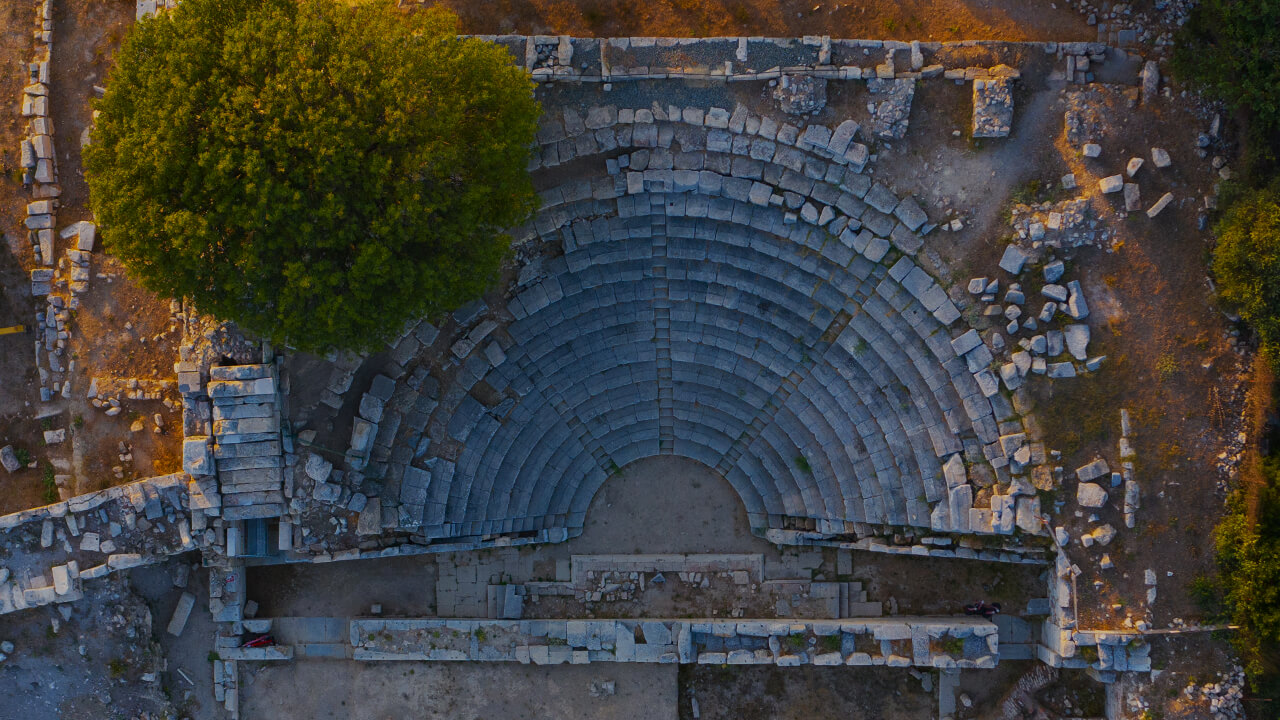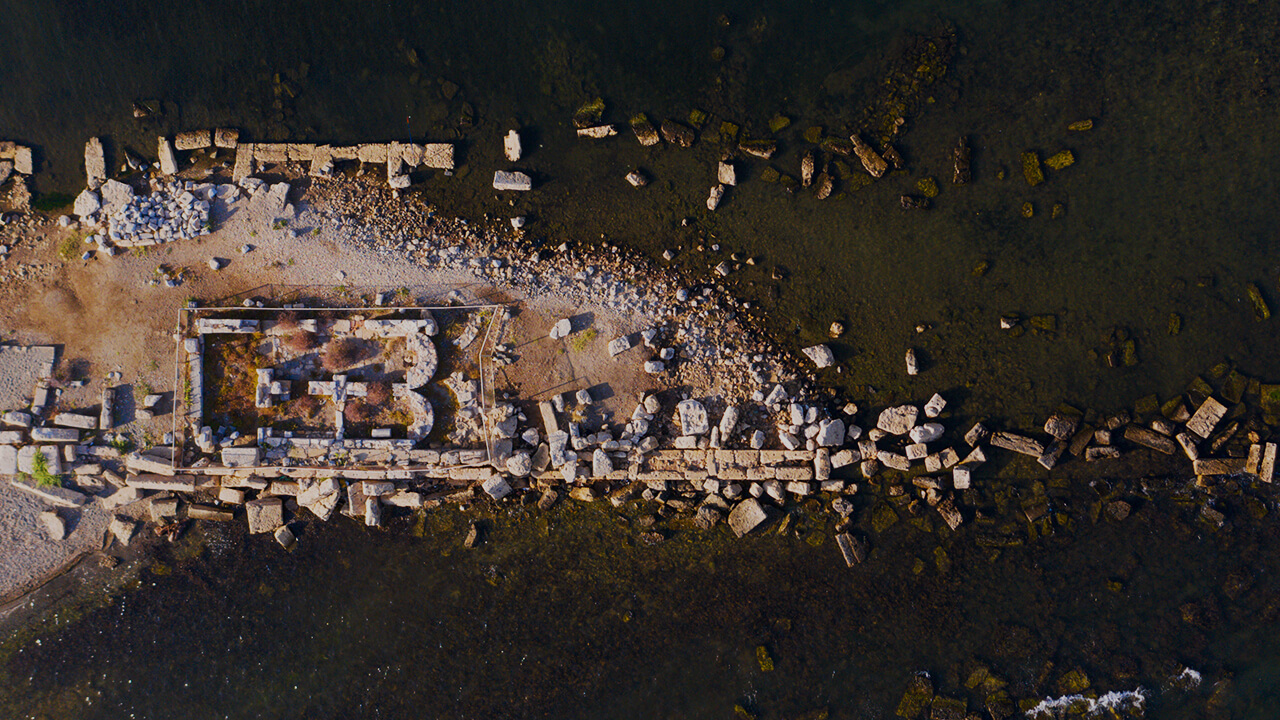
24.03.2023
5 Dakika
The Teos Archaeological Site, located within the boundaries of the district of Seferihisar in present-day İzmir, includes the ruins of an ancient port city built on a peninsula on the western coast of Anatolia. The Teos Archaeological Site has two harbors of different sizes and also houses the Temple of Dionysus, a structure worth seeing that was built by the famous architect Hermogenes of Alabadanda.
With its centuries-old history and interesting buildings, Teos, one of the archaeological sites in the Aegean region of Türkiye, attracts a large number of visitors every year and could be the subject of a blog of its own. But in this blog, we are going to talk about an archaeological artifact that was found by chance and some of the interesting information that we learned about the history of the city thanks to this artifact.
The relic we are going to talk about is an inscription carved in stone, which contains a decision made by the Teos Council hundreds of years ago. Let us talk about how this inscription, which is now exhibited in the garden of the İzmir Archaeology Museum, was found and its content, which helps us to illustrate a piece of the history of the Teos Archaeological Site.

The inscription in question was excavated in 1992 during the demolition of an old house in Seferihisar. The story of its discovery points to a very interesting fact, namely the distillation of historical information from material thousands of years old. The object, which contains knowledge about events that happened to the inhabitants of a city hundreds of years ago, camouflaged itself as a staircase stone of a house. The inscription, which stretches over 102 lines and consists of very small letters, was discovered and protected by the architect Duran Mustafa Uz, and its content was deciphered and understood despite the fractures and traces of mortar that made it difficult to read.
The inscription, which can be proved to contain a decision of the council of Teos, reveals that the city was the victim of a pirate attack in the 3rd century BC and that it was decided how to meet the pirates' high ransom demand against the inhabitants of the city. It gives an insight into the extent of piracy on the Mediterranean coast during the Hellenistic period, which is known to have been a politically turbulent time, and also reveals many details about this difficult period experienced by the inhabitants of Teos.
This pirate attack, which may have been behind the city's efforts to gain "asylia", a sacred immunity of the time, through the famous temple of Dionysus, caused all Teosians to cede a tenth of their wealth to the pirates, according to the inscription. The pirates attacked Teos and captured the port and strategic points, arresting the rulers and dignitaries and taking many citizens hostage. It is even believed that the pirates were in the city when the assembly met to make the decision mentioned in the inscription. Therefore, it can be said that the ransom demanded was paid out of desperation by the Teosians, whose city was occupied by pirates. According to the inscription, in addition to gold coins and other valuables, hundreds of thousands of Alexandros drachmas must have been paid to the pirates. Another inscription found in Teos states that the music teachers, who were among the best paid employees of the city, received an annual salary of about 700 drachmas, which makes it easier to understand the extent of the wealth extorted by the pirates.

The Teos pirate inscription, which gives us an insight into a very difficult time experienced by the people of this beautiful port city thousands of years ago, and which spent part of its life as a stepping stone of a house, now spends its days in the garden of the İzmir Archaeology Museum. The Teos Archaeological Site, with the remains of the Temple of Dionysus, built by the inhabitants to prevent such a painful event from happening again, awaits your visit to Seferihisar, İzmir.